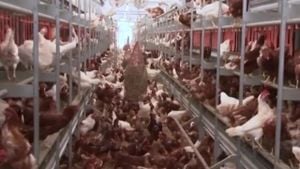Recent tax adjustments from the federal and provincial governments in Canada have stirred quite the conversation, especially with the announcement of temporary tax relief measures aimed at helping citizens and businesses alike. Starting on December 14, 2024, the federal government plans to lift the Goods and Services Tax (GST) and the Harmonized Sales Tax (HST) on select necessary items for two months. This move is part of their strategy to lighten the financial load on families, particularly during the holiday season.
Prime Minister Justin Trudeau unveiled these plans during a grocery store visit, where demonstrations of how the changes could directly impact consumers were evident. Goods ranging from groceries and alcohol to children's clothing will be exempted from the GST. The government estimates this could provide significant savings; for example, families spending about $2,000 on eligible items could save close to $100 just from the GST exemption. That figure could rise to approximately $260 when factoring in the HST applicable in certain provinces.
This temporary tax relief seeks to boost consumer spending during the busy holiday season, potentially injecting around $1.6 billion back to the economy. The approach aims to alleviate the financial strain many Canadians are feeling amid rising living costs and inflation. Premier Susan Holt of New Brunswick highlighted the conflicting scenario where her province could experience revenue loss up to $62 million due to the federal GST holiday. This has raised eyebrows over how provincial governments will cope with their budgets amid such sweeping changes.
"We only learned about the proposal recently, and it poses significant financial challenges for us," Holt said during the recent legislative session. It exemplifies the precarious juggling act between ensuring consumer relief and maintaining governmental revenue streams.
Another aspect of the new tax measures includes the announcement of $250 checks destined for eligible Canadians who earned $150,000 or less in 2023. This dual approach – tax relief combined with cash payments – may spur immediate spending, but economists warn it could also lead to unintended economic repercussions.
Alongside concerns about the national debt, critics like Stephen Gordon, professor of economics at Laval University, have expressed skepticism about the effectiveness of this strategy. "Once politicians begin to see tax adjustments as politically beneficial, they may never end," he cautioned, describing the potential long-term fallout on fiscal responsibility and public trust.
Economists are divided on the actual impact of these temporary measures. Some predict they might stimulate the economy momentarily, especially among lower-income households who are more likely to spend the relief checks quickly. Others anticipate minimal effects, as many consumers may simply shift their purchase timing rather than increase overall spending. For example, groceries purchased during the period might be bought at the same frequency but could be planned differently based on the temporary tax cut.
From the perspective of businesses, especially retail and food service sectors, the immediate task will be to adjust their point-of-sale systems to accommodate these changes. Data from large retailers already suggest preparations are underway to implement these tax exemptions effectively, but how it plays out at stores will be under scrutiny.
The potential for complications doesn't stop there. Should the GST holiday be extended or made permanent as many anticipate, it could push federal finances and existing budget plans to the brink. Ottawa's own economic projections have indicated targets might need to be adjusted yet again. Currently, the federal government aims to keep the deficit at or below $40 billion, but the reality might portray another narrative.
Some economic analysts argue these measures, particularly if prolonged, could endanger the fiscal framework established by previous governments. They raised concerns about the impact of renewed consumer spending on inflationary pressures, which could, paradoxically, stifle the very financial relief measures intended to support families.
Meanwhile, the provincial response continues to evolve. Leaders across various province governments are grappling with budget realities and long-term fiscal planning juxtaposed with immediate relief pressures. Some have begun negotiations with the federal government to mitigate revenue losses, particularly for provinces like New Brunswick, where the financial impact is felt more significantly.
Holt's team is currently analyzing where potential savings can be made within expected budget allocations to counteract the hit. The conversation about withholding revenue and increasing deficits is likely to shape future legislative sessions as all parties attempt to navigate the balancing act of fiscal responsibility and addressing public financial concerns.
On another note, provincial governments have begun laying out their own tax relief initiatives. Ontario, for example, has been proactive, presenting its measures during their Fall Economic Statement, discussing how the economy needs targeting at the level of personal finance, alongside bolstering household capacities.
Overall, as Canada approaches the end of 2024, the tax relief initiatives from both federal and provincial governments are as much about managing economic recovery as they are about individual financial wellbeing. The hope is to catalyze consumer sentiment positively, fostering the broader economy recovering from the strain inflicted by inflation and the pandemic aftermath.
Expectations are cautiously optimistic; can this injection of cash and tax temporary relief reshape consumer spending and stabilize the economy? Or will this temporary fix exacerbate the issues surrounding government deficits?



